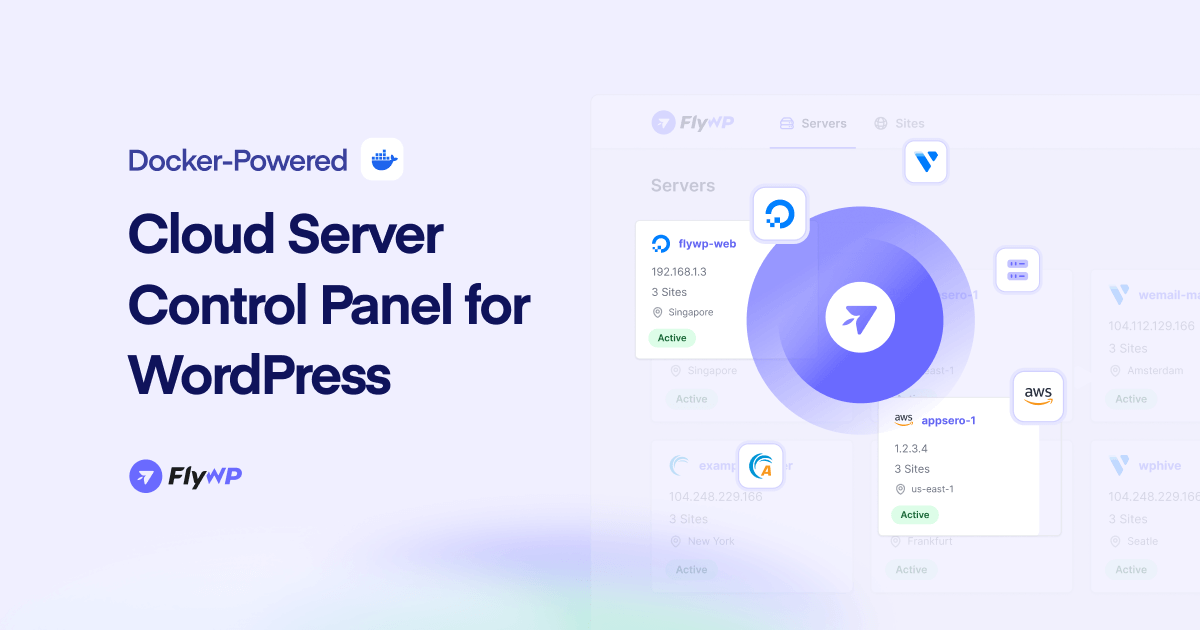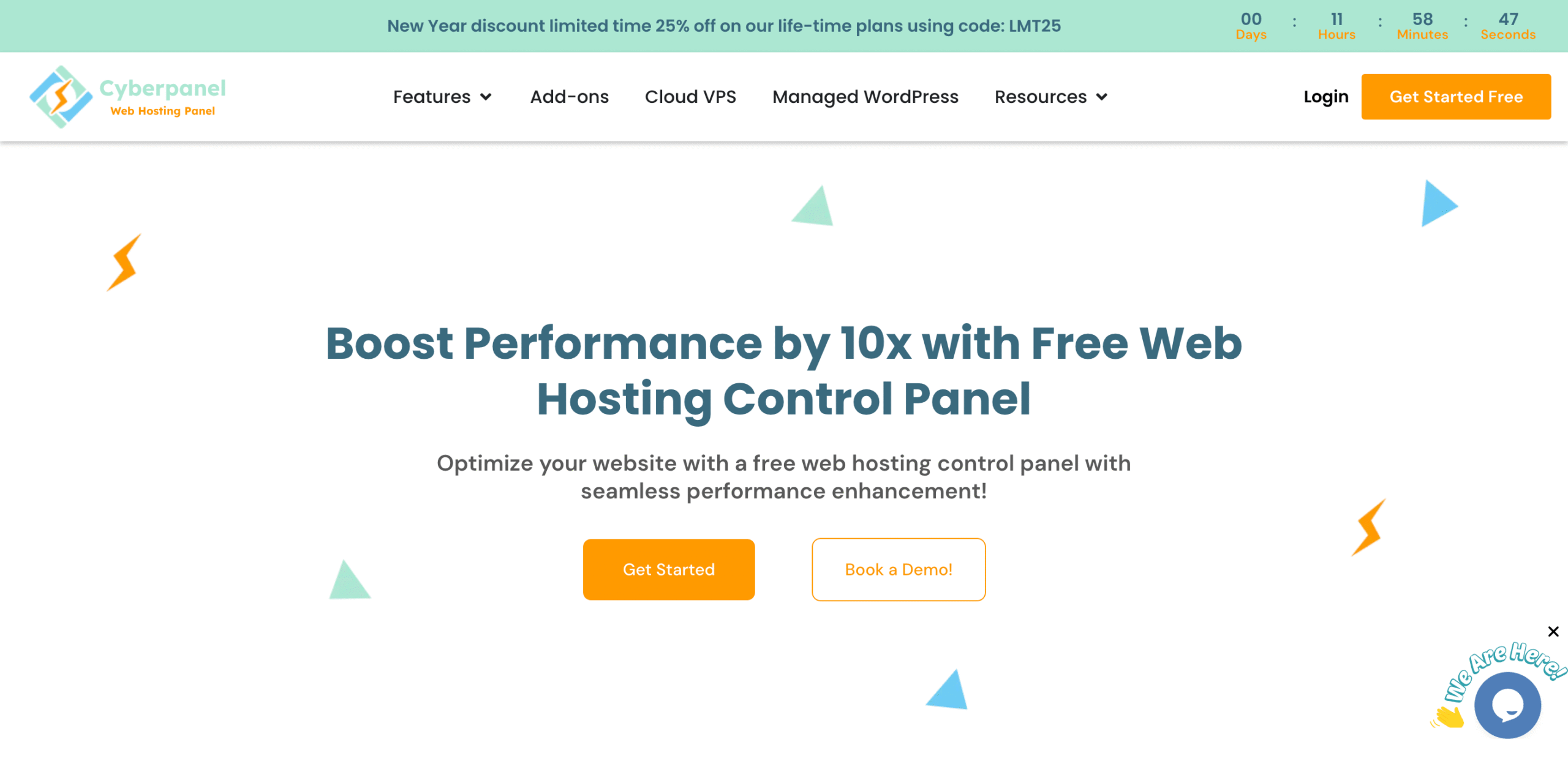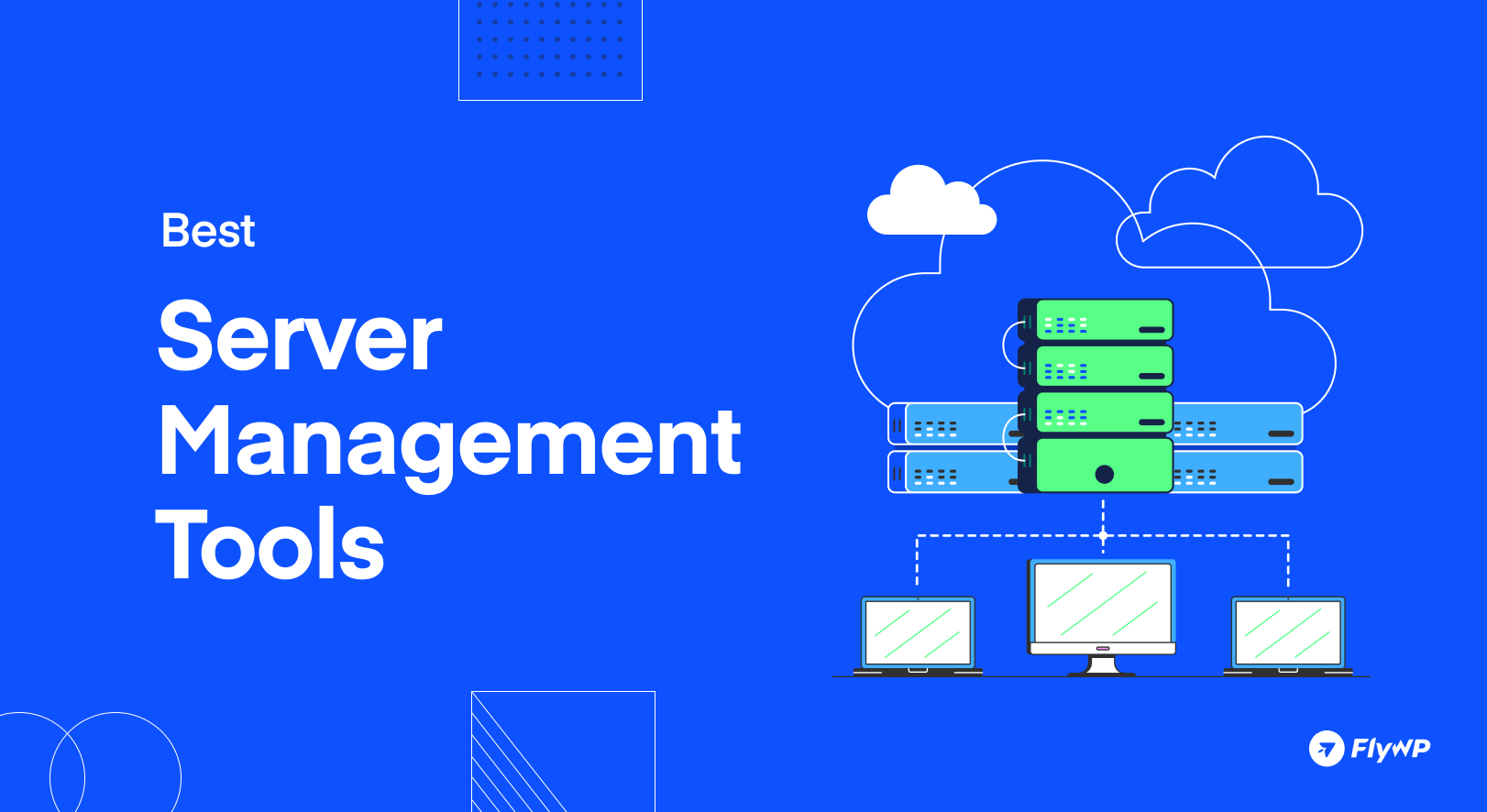Ever feel like your server has a mind of its own? Yeah, we’ve been there. Trying to manage everything manually is a huge headache, especially when you consider the server industry is exploding- it’s expected to hit $175 billion by 2025!
Forget the stress. We’re breaking down the best, user-friendly tools and control panels that put you back in charge. Let’s find the right one for you!
Understanding the difference between server management tools and control panels is key to choosing the right way to manage your web server. They might sound similar, but they serve different primary purposes, especially when you bring WordPress into the mix.
Let’s break it down.
What Are Server Management Tools?
Think of server management tools as the engine diagnostics kit for your server. Their main job is to monitor, analyze, and maintain the health and performance of the server itself. These tools are crucial for system administrators and DevOps professionals who need a deep, technical overview of their infrastructure.
They focus on answering questions like:
- Is the server online and responsive? (Uptime Monitoring)
- How much CPU, RAM, and disk space is being used right now? (Resource Monitoring)
- Are there any security threats or unusual network activity? (Security & Network Analysis)
- How are applications performing and are there any bottlenecks? (Application Performance Monitoring – APM)
- Can we automate routine tasks like backups and updates? (Automation)
These tools often present data through dashboards with graphs and logs, and they excel at sending alerts when something goes wrong. You generally don’t use them to add a new website or create an email address.
What Are Control Panels?
If a server management tool is the engine diagnostic kit, a control panel is the car’s dashboard and infotainment system. It’s a web-based graphical user interface (GUI) that makes it easy for anyone even those without command-line skills to manage common web hosting tasks.
Control panels are designed to simplify the “hosting” part of running a server. They turn complex server commands into simple clicks.
Common tasks you’d perform with a control panel:
- Adding a new domain or subdomain.
- Creating and managing email accounts.
- Uploading and managing website files (File Manager).
- Creating and managing databases (like MySQL/MariaDB).
- Installing applications like WordPress with one click.
- Setting up SSL certificates.
Control panels provide a user-friendly layer on top of the server’s operating system. It makes server administration accessible to website owners, designers, and developers.
Special Category: WordPress Cloud Server Management Tools
This is where the lines blur in the best way possible. These modern tools are a hybrid, often called “cloud control panels,” built specifically for high-performance WordPress hosting on cloud servers (like DigitalOcean, AWS, Vultr, Google Cloud).
They offer the simplicity of a control panel but are laser-focused on providing a highly optimized, secure, and fast environment for WordPress sites. They automate the complex work of setting up a bare cloud server, which would otherwise require expert-level command-line skills.
What makes them different?
- Optimized Stack: They automatically install and configure the best software for WordPress performance (e.g., NGINX web server, the latest PHP versions, MariaDB, and caching like Redis).
- WordPress-Specific Features: They include tools for one-click staging sites, easy SSL certificate installation, Git deployment, and automated backups tailored for WordPress.
- Developer-Friendly: While user-friendly, they offer advanced features that developers love, such as WP-CLI access, log viewing, and easy PHP version switching.
- No Server Bloat: They only install what’s necessary to run WordPress fast, unlike traditional control panels that might include many services you’ll never use.
Top 5 Server Management Tools and Control Panels
1. FlyWP: The Unified Docker Based WordPress Cloud Server Control Panel

FlyWP positions itself not just as a control panel, but as a complete, end-to-end platform for managing WordPress on modern cloud infrastructure. Its core philosophy is to unify the entire workflow from server creation to ongoing site management and security into a single, intuitive dashboard. The ability to provision servers directly from multiple cloud providers (like DO, AWS, Vultr) is a standout feature, eliminating the friction of logging into separate accounts to get started.
Security is clearly a cornerstone of the platform. It goes beyond basic SSL certificates by implementing a multi-layered defense system. The use of Docker for site isolation is a critical architectural choice, ensuring that each website is a fortress; a breach in one does not compromise the others. This is reinforced by a robust 7G Firewall, server-level firewall rules, and specific WordPress hardening measures like content filtering. This comprehensive approach shows a deep understanding of the modern threat landscape.
For developers and agencies, FlyWP offers a suite of powerful tools that streamline daily operations. Git-based deployment, a choice of Nginx or OpenLiteSpeed stacks, and support for both ARM & x86 processors demonstrate a commitment to flexibility and modern development practices. Features like one-click cloning, staging/demo sites, and centralized updates are massive time-savers, turning complex, multi-step processes into simple actions. FlyWP is designed for the professional who needs a powerful, secure, and highly efficient system to manage a portfolio of WordPress sites without getting bogged down in manual server administration.
Key Features
Server Provisioning & Management
- Multi-Cloud Server Support: Instantly provision and connect servers from DigitalOcean, AWS, Vultr, Hetzner, or any custom provider.
- Docker-Based Architecture: Runs each site in a secure, isolated container for enhanced stability and security.
- ARM & x86 Processor Support: Deploy on a wide range of modern and classic server architectures.
- Server Health & Status Monitoring: Keep a close eye on server resources and performance to ensure uptime.
- SSH Key Management & Server CLI: Securely access your server and utilize a powerful command-line interface when needed.
- Supervisor Daemons: Easily manage long-running background processes and applications directly from the dashboard.
Site & WordPress Management
- Multiple Site Stacks: Choose between high-performance Nginx or OpenLiteSpeed stacks on a per-site basis.
- One-Click Clone, Transfer & Migration: Effortlessly duplicate or move sites between servers.
- Git-Based Deployment: Automate your development workflow by deploying changes directly from your Git repository.
- Centralized WordPress Updates: Manage bulk updates for WordPress core, themes, and plugins across all your sites.
- WordPress Multisite Support: Easily deploy and manage complex WordPress Multisite networks.
- Advanced Database Manager: A powerful, integrated tool for direct database management, supplemented by one-click phpMyAdmin access.
- Comprehensive File & Cron Job Manager: Manage files through a web-based interface and automate repetitive tasks with a user-friendly cron scheduler.
Security & Performance
- Two-Factor Authentication (2FA): Secure your FlyWP account with an essential, extra layer of protection.
- 7G Firewall Protection: A robust, industry-recognized firewall that blocks a wide range of common attacks and malicious traffic.
- Site Isolation in Docker Containers: Prevents security breaches or performance issues from spreading between sites on the same server.
- Advanced Caching: Boost site speed with built-in, easily configurable Redis and FastCGI page caching.
- Cloudflare Management & Integration: Manage DNS and leverage Cloudflare’s security and performance benefits directly from the dashboard.
- Automatic Security Updates: Schedule maintenance windows for automated, non-disruptive security enhancements to the server stack.
2. RunCloud: The Developer’s Toolkit

RunCloud is a powerful and respected tool, particularly for developers who work with a wide range of PHP applications. Its strength lies in its flexibility it’s designed to handle Laravel and Symfony just as well as it handles WordPress. This makes it a solid choice for generalist developers with a diverse project portfolio.
However, for those who are exclusively focused on WordPress, this broad approach can introduce unnecessary complexity. The user interface and workflow are designed to cater to many different application types, meaning the experience isn’t as finely tuned for WordPress as a dedicated platform. While it has good WordPress features, they are part of a larger, more generic toolkit rather than being the central focus. In contrast, FlyWP is built from the ground up with a “WordPress-first” mentality, ensuring every feature is perfectly optimized for that ecosystem.
Key Features
- Multi-Application Support: Manages WordPress alongside other PHP apps like Laravel.
- Atomic Git Deployment: A professional feature for zero-downtime code deployments.
- Server Health Monitoring: Detailed dashboards for tracking server resources.
- Team Collaboration: Allows for multiple users with specific permissions.
- Web Application Firewall (WAF): Includes a built-in firewall to protect against common exploits.
3. SpinupWP: An Efficient Tool

SpinupWP is excellent at one thing: creating a blazing-fast, highly secure server environment based on its team’s expert opinions. It makes the technical decisions for you, building a lean server stack designed for pure performance. This is great for developers who want a minimalist setup and align perfectly with SpinupWP’s specific workflow.
The downside to this “opinionated” approach is a significant lack of flexibility and convenience. By deliberately omitting core tools like a web-based file manager or an integrated database manager (like phpMyAdmin), it forces users into a command-line-heavy workflow using external tools. For many users, this is a major hurdle that slows down simple tasks. FlyWP provides the same high-performance server options (like Nginx and Redis) but also includes the user-friendly management tools you need for day-to-day work, offering the best of both worlds without forcing you to make a trade-off between power and convenience.
Key Features
- Performance-First Stack: A finely tuned NGINX and Redis stack for speed.
- Security Hardening by Default: Implements strong security measures automatically.
- Push-to-Deploy Git Integration: A key feature for automated developer workflows.
- Full
sudoUser Access: Provides deep server control for advanced users. - Automated Backups: Schedule backups to various cloud storage providers.
4. Plesk: All-in-One Platform

Plesk is a long-standing industry giant, known for its incredible breadth of features. It’s a true all-in-one solution that can manage email, Windows servers, reseller accounts, and more. Its WordPress Toolkit is undeniably powerful for managing a large number of sites.
However, for the modern WordPress professional focused on cloud hosting, Plesk can often feel like overkill, burdened by legacy features. Its architecture is not built on modern principles like containerization, which means you don’t get the same level of site isolation and security that FlyWP’s Docker-based system provides. Many of its features, such as the built-in mail server, add unnecessary complexity and resource overhead for users who prefer dedicated services. FlyWP offers a leaner, more focused platform, giving you all the essential tools for WordPress without the bloat of an older, all-encompassing system.
Key Features
- The WordPress Toolkit: A comprehensive suite for mass-managing WordPress installations.
- Multi-OS Support: A key advantage for those who require Windows Server hosting.
- Integrated Email Server: A full-featured solution for hosting your own email.
- Extensive Extension Catalog: A marketplace to add a wide range of functionalities.
- Reseller & Subscription Management: Built-in tools for hosting companies.
5. CyberPanel: The DIY Tool

CyberPanel’s primary claim to fame is its use of the high-performance OpenLiteSpeed web server, and the fact that it’s free is a major draw. For hobbyists or developers who love to tinker, it provides an opportunity to achieve incredible site speed on a minimal budget.
This “free” price tag, however, comes with hidden costs. Being an open-source project, support is primarily community-based, which can be a significant risk for business-critical websites. The user experience, while functional, lacks the polished, unified, and seamless feel of a professionally developed platform like FlyWP. You are often on your own to solve problems and integrate services. CyberPanel is a fantastic engine, but FlyWP provides the entire luxury vehicle a complete, reliable, and expertly supported platform where every component is designed to work together perfectly right out of the box.
Key Features
- OpenLiteSpeed Web Server: Its core feature, providing excellent performance.
- LSCache Integration: Unlocks powerful, server-level caching for WordPress.
- Free & Open Source: The panel itself costs nothing to install.
- Full Email Support: Includes the ability to set up your own mail server.
- Docker Manager: Provides a basic interface for managing Docker containers.
Ready to Upgrade Your WordPress Workflow?
Stop choosing between powerful features and a simple interface. You don’t have to settle for a platform that’s overly complex, rigid, or lacks the modern security your business needs.
FlyWP was built to end the compromise. It delivers the ironclad security of Docker isolation and the efficiency of a unified dashboard without sacrificing the powerful tools you need to grow. It’s the professional platform your WordPress sites deserve.
